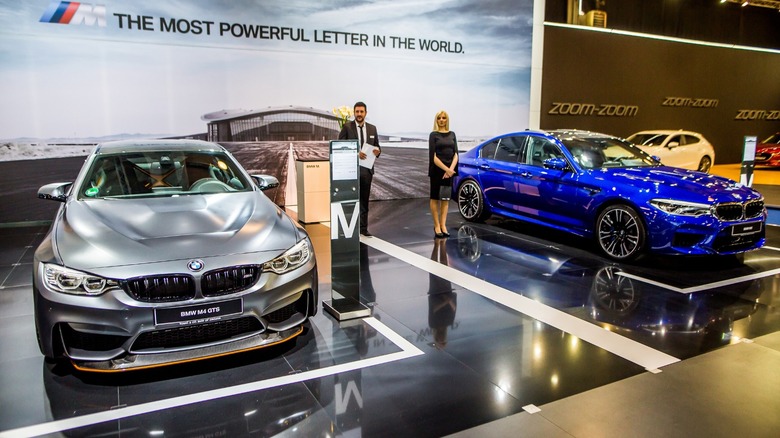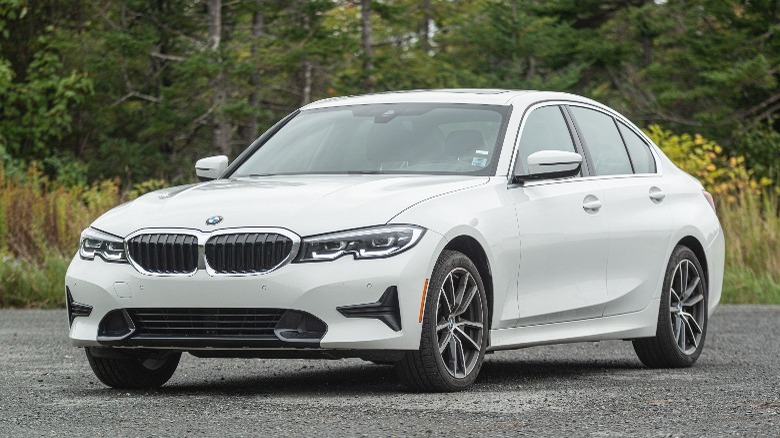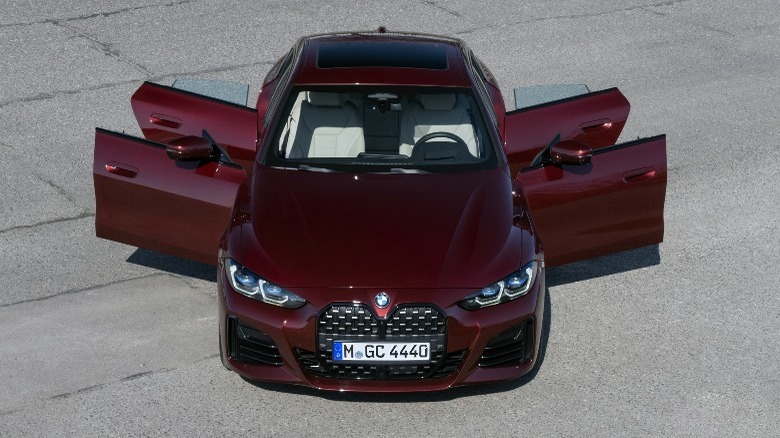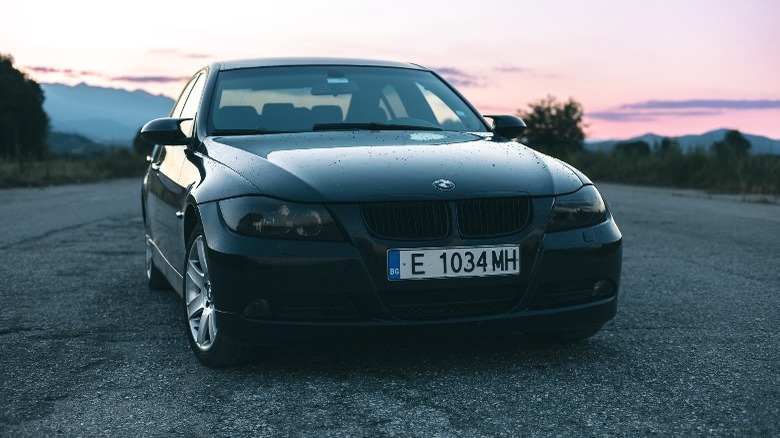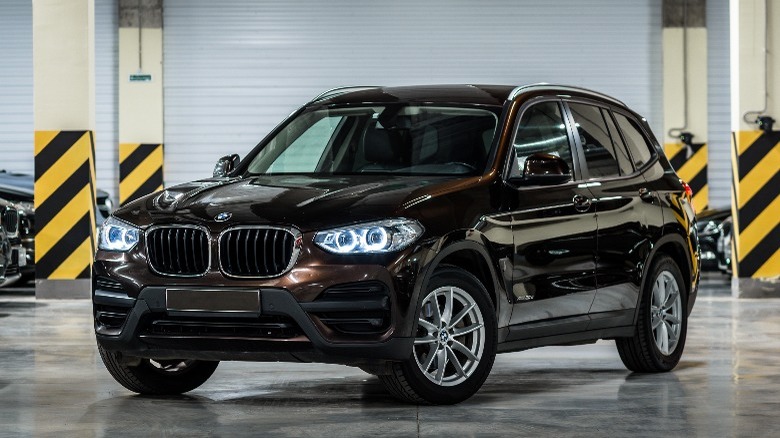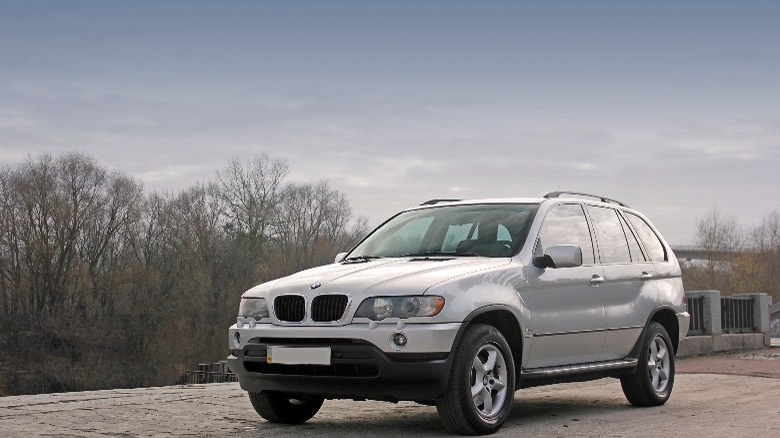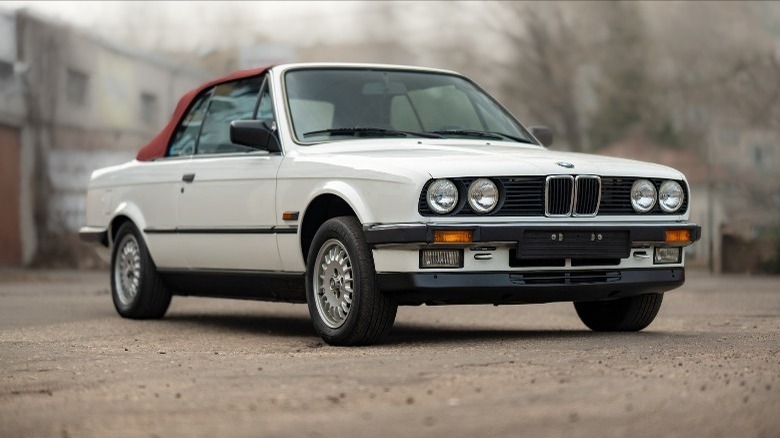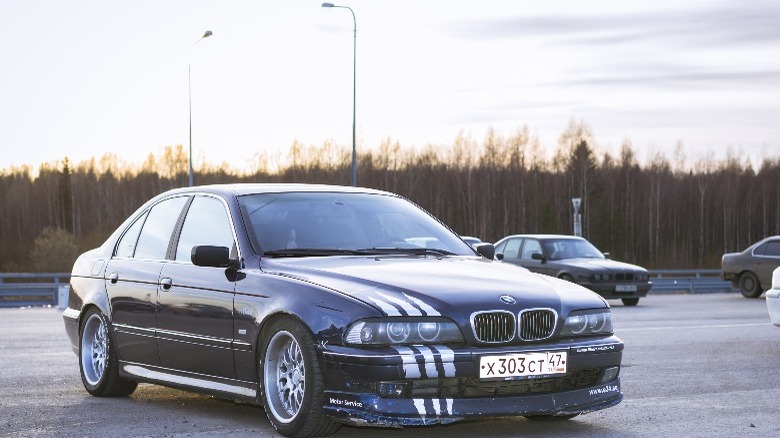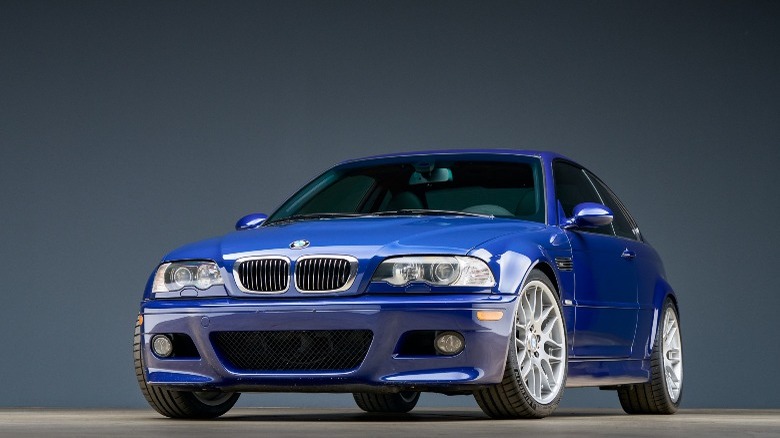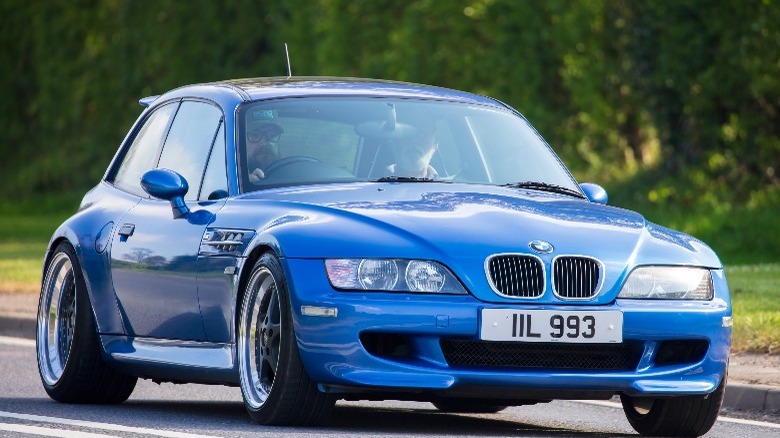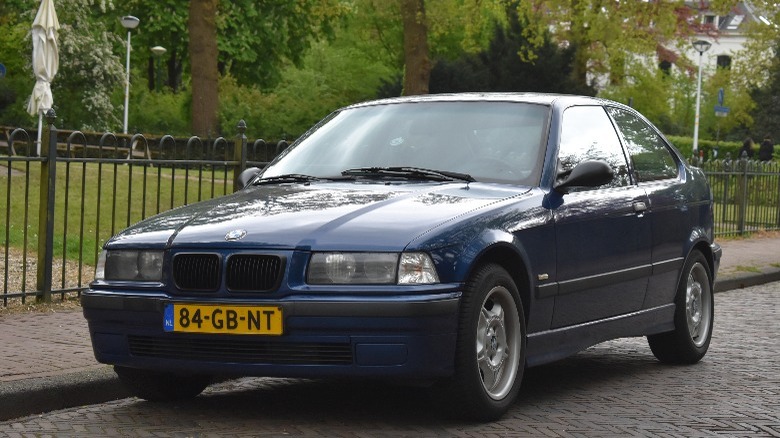10 Of The Most Successful Models In BMW History
Since its founding in 1916, BMW has transcended from being a mere enterprise into a household name. A lot of this, as with any business, is due to the success of its products.
When it comes to product models, the German multinational motor vehicle manufacturer has had some hits and misses over the years. However, history has shown that its hits have far surpassed its misses.
What makes a car model successful is much more than the obvious market demand and sales figures. Like any product, a car is created and manufactured to solve a problem as well as outperform competitors, and oftentimes, this will translate into healthy demand and sales figures. Solutions could range from increased performance to enhanced comfort, and improved technology.
The 10 cars on this list were selected based on their renowned capacity to solve the problems they were aimed at. They were also selected based on industry recognition, customer satisfaction, and historical significance.
BMW 330i
If you're a driver looking for a comfortable performance vehicle perfect for everyday use, chances are you have stumbled upon the BMW 330i. The vehicle hit the market in 2019 and is the only model on our list still actively being produced.
The 330i is regarded not just as one of BMW's most successful vehicles, but also as one of its most well-rounded, thanks to its capabilities to drive smoothly in all seasons. In typical BMW fashion, the car is reputed for combining luxury with performance. In our first drive of the 2019 BMW 330i, we enjoyed its smooth handling and drivetrain.
When it comes to performance, it is equipped with a 2.0-liter BMW TwinPower Turbo inline-four engine with 255 hp meaning it can accelerate from 0 to 60 mph in 5.6 seconds. This can be upgraded to the M340i variant which is a turbocharged inline-six engine with up to 382 hp. The 330i is expected to continue production with the prices for the 2025 model starting at about $46,675.
BMW 4 Series Gran Coupe
There are three words that come to mind when we think of this model: comfort, practicality, and quality. The BMW 4 Series Gran Coupe was introduced in 2014 as part of the second generation of the BMW 4 series.
The four-door sedan was created with one fundamental objective which was to retain the performance of a BMW sports car in a sedan or small SUV-sized car. It particularly appealed to drivers who wanted sports cars and mid-sized sedan capabilities all in one vehicle. And BMW succeeded in meeting this need.
The BMW 4 Series Gran Coupe is popular and with good reason. The car comes in the i4 and 430i models. Its exterior not only features the new big kidney grille but also has sleek LED headlights, a coupe-like roofline, and an aerodynamic silhouette. It also comes with gasoline, diesel, and hybrid plug-in powered engines with dual options of a turbocharged four-cylinder as well as a six-cylinder.
The BMW 4 Series Gran Coupe remains a success in the industry thanks to its proactiveness in keeping its technologies up to date. This is aptly reflected by the introduction of upgraded engines, technology, and style in 2024.
BMW 3 Series E90
Continuing what is sure to be multiple entries from the 3 Series is the E90. Regarded by some as BMW's last good car, this vehicle was produced between 2005 and 2013. It had a successful eight-year production run and an even longer stay on the roads and market. The E90 is a fifth-generation 3 series that comes in the sedan body style.
A lot of 3 Series E90's success is due to its reliability and overall quality. Its stylish evergreen exterior was matched by its handling and bursts of speed, which highlighted BMW's tradition of producing driver-centric vehicles, particularly sedans. At its heart was the 328i engine with over 215 hp and 199 lb-ft of torque.
There is little wonder why this vehicle performed extraordinarily well globally in terms of sales, nearly hitting the 2 million mark. It also boasts several industry awards, including the 2006 World Car Of The Year which it picked up at the New York International Automobile Show.
BMW X3 G01
A more recent model entry on our list is the BMW X3 G01, which was produced between 2018 and 2021. This luxury crossover SUV was introduced as the third generation of the BMW X3 with the objective of enhancing the manufacturer's stake in the SUV sector in response to popular demand.
In typical BMW fashion, it melds performance and comfort, making it no surprise that the small luxury vehicle particularly appealed to U.S. drivers. The interior design is centered around a new 10-inch central information display which can be enlarged to 12 inches.
The exterior has a modern and innovative look, keeping with its recent production time. The highlight of the exterior at the front is BMW's kidney grille and adaptive LED headlights.
A large part of the G01's success was its introduction as an M Performance version of the X3 series. The engine comes with gasoline, diesel, and plug-in hybrid variants with the crown jewel being the X3 M40i 3.0-liter TwinPower Turbo inline-six engine with 382 hp and 369 lb-ft of torque, capable of sprinting from 0-60 mph in about 4.4 seconds.
BMW X5 E53
It is fitting to talk about an X5 model right after the X3 given the healthy rivalry that exists between the two lines. However, the X5 E53 holds a special place in BMW history as it was the company's first-ever SUV, and a tremendously successful one, at that.
A mid-size crossover SUV produced from 2000 until 2004, the X5 E53 introduced BMW's concept of a Sports Activity Vehicle (SAV), highlighting its work, off-roading, and sporting capabilities compared to other SUVs. It featured a more powerful engine than that of the X3 G01, especially when it subsequently introduced the V8 engines with its 4.6is and 4.8is variants. Those engines had an average hp of 349 and could go from 0 to 60 mph in approximately 6 seconds.
In hindsight, the X5 E53 did exactly what BMW created it to do. It provided stern competition in the SUV markets to those produced by Range Rover and Mercedes Benz, while also pioneering its prestigious and profitable X series.
BMW 3 Series E30
The third 3 series on our list is the second-generation model known as the E30. The vehicle took the world by storm during its dozen years of production between 1982 and 1994, and remained an icon even years after. Even today, it is still very much sought after in used markets and this is a testament to why it is one of the most iconic BMWs ever produced.
The build quality was super premium, with high-grade suspension, brakes, and steering that helped the car stand the test of time. E30 also made a bit of history as the first 3 Series to offer an all wheel drive (AWD) option when the company introduced the 325iX model in 1985.
This is one of BMW's most-sold car models, with over 2.3 million of them sold worldwide, so it should come as no surprise that it has received a lot of recognition and quite a few awards. The M3 touring variant also won several car championships including the inaugural World Touring Car Championship (WTCC) in 1987, the European Touring Car Championship (ETCC) between 1987 and 1989, and the British Touring Car Championship (BTCC).
BMW 5 Series E39
The BMW 5 Series E39 is not only one of BMW's most successful vehicles, but one of the most successful sedans ever produced. Initially released in 1995, it survived the turn of the century and was produced up until 2003. The E39 vehicle succeeded the E34 model and drastically improved on its already impressive features.
On the exterior, you will find a car that is approximately 15.6 feet long and 5.8 feet wide, with a more modern aerodynamic design that exudes the elegance that has been a bedrock of BMW motors for years. The interior matches up that with a gorgeous array of engine variants that peaks at the 4.9-liter S62 V8 engine that produces a whopping 394 hp that can go from 0 to 60 mph in under 5 seconds. This engine was at the heart of the M5 model variant, a vehicle that needs no introduction for gearheads across the globe.
The E39 also beat out its predecessor in sales with approximately 1.2 million units sold by the time production ended.
BMW 3 Series E46
The E46 emerged in 1997, at a time when sedans were particularly in demand, and aimed to be the perfect vehicle for those looking for great sports performance and comfortable day-to-day use. Its success can be mainly attributed to its reliable drive performance and sleek design, which provides both driver and passengers with immense comfort.
If you were to take a ride in this vehicle, the smoothness of its drivetrain would not be lost on you at all. The M3 variant is particularly reputed for its 3.2-liter naturally aspirated inline-six engine, which added 333 hp and can go from 0 to 60 mph in 4.5 seconds. Given all that, it is no surprise that it was able to amass outstanding sales numbers. 85,000 of the M3 variants were sold between 2000 and 2006, making it the most successful BMW M high-performance model of all time.
This vehicle also preceded the iconic E90 model, providing it the platform to excel as it did.
BMW Z3
The BMW Z3 is an absolute classic. Produced between 1995 and 2002, this two-seater sports car was one of the greatest roadsters to ever grace the streets, and it's one of the most iconic BMWs ever. Only about 297,000 units of this model were made and a third of that was sold within the first two years of its introduction.
Though some of its success may be attributed to the (relatively) affordable car's appearance in the "James Bond" franchise, there's a lot more to it. Under the hood of a BMW X3, you would likely find either an M44 four-cylinder engine with up to 138 hp, or a 2.8-liter inline-six engine that produced up to 190 hp. The two-seater was also extremely stylish and sporty, and it allowed BMW to finally reintroduce a roadster to the United States — nearly 40 years after its last attempt, with the 507 in 1957.
Looking back, the Z3 did exactly what it was produced to do — create a buzz for the manufacturers, as well as make both drivers and passengers look super cool.
BMW 3 Series E36
Rounding off our list, perhaps unsurprisingly, is the third-generation E36 model produced between 1991 and 1998. This car was originally a four-door sedan, but later on BMW introduced coupe, convertible, compact hatchback, and wagon style variants.
A driving force behind the E36's success was its pristine range of engine variants, which included the 318i 1.9-liter four-cylinder engine, 328i 2.8-liter six-cylinder, and a 3.0-liter S50 inline-six engine, amongst others.
Even after its production stint, the coupe maintained a level of prestige in the car industry, particularly in North America and Europe, thanks to its timeless design and driver satisfaction. And though rivaled by the Mercedes-Benz C-Class (W202), the E36 managed to sell in excess of 2.7 million units globally.
In spite of this, the E36 is regarded as one of BMW's most underrated vehicles, as it still does not get credit for raising drivers' standards when it comes to compact executive cars.
